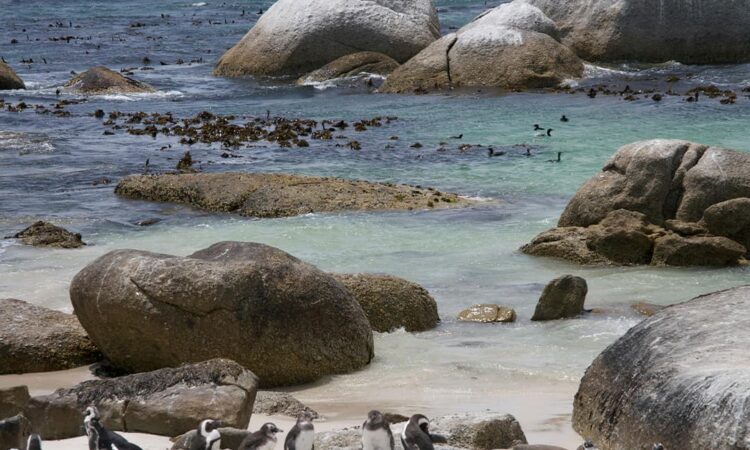Antarctica is the coldest region on the planet. It is also experiencing some of the most intense heat waves in the world.
Climate warming has caused sea ice around Antarctica to shrink to its smallest ever recorded area in February 2023, followed by an additional record low during the Antarctic winter from June to September, continuing a decade-long decline. This is a clear indicator of rapid environmental change with implications for Antarctic wildlife.
The Antarctic sea ice is home to a range of species, from tiny crustaceans like the Antarctic krill to the largest species of penguin, the emperor penguin, which rely on the sea ice habitat for their survival.
As the Antarctic environment is undergoing rapid change, many Antarctic species are feeling the heat.
Emperor penguins live in an uncertain future
Emperor penguins are the only penguin species that breed during the Antarctic winter. During this time, they rely on stable sea ice to lay their eggs and raise their chicks. As regional temperatures rise, the breakup of sea ice during the spring season occurs earlier. This can be fatal for chicks that have not yet developed their adult waterproof feathers or learned to swim.
This is exactly what happened at the end of 2022 – a significant decrease in sea ice in the Bellingshausen Sea caused a catastrophic breeding failure in four colonies, leading to the death of thousands of chicks.
The fate of emperor penguins is closely linked to sea ice. Studies have shown that 98% of emperor penguin colonies could be on the verge of extinction by 2100 if no changes are made to current carbon emissions and climate change.
Declining krill populations will have far-reaching consequences for a range of wildlife
At the center of the Antarctic food web lies a tiny but powerful organism known as krill. These shrimp-like creatures are the primary food source for countless species, including penguins, seals and whales. Antarctic krill also perform an important ecosystem function for our planet – each year they capture millions of tons of carbon and transport it to be safely stored in the ocean, which helps maintain stable climate conditions.
The krill relies on habituation under sea ice during key phases of its life cycle, especially during the larval stage, to obtain food and hide from predators.
The Antarctic Peninsula, and projections indicate that krill numbers could decline by more than 40% by the end of the century in areas such as the North Scotia Sea.
Krill is also the target of large-scale commercial fisheries around the Antarctic Peninsula. The current management of this fishery is considered outdated, as it does not take into account the impacts of climate change on Antarctic krill and allows for concentrated fishing efforts, meaning that fishing vessels target the same shallow areas every year. Evidence suggests that climate change, combined with overfishing, is affecting Antarctic krill populations and their predators.
Declining krill numbers and changes in their distribution will continue to have significant impacts on whales, penguins, fish and seabirds that rely on krill as a primary food source. Evidence is already emerging that chinstrap and Adélie penguins, as well as humpback whales, are suffering the consequences.
Studies have found a 30% decline in chinstrap penguin numbers around the Antarctic Peninsula, which makes up a large portion of the population. This decline is likely due to a decrease in krill numbers during years with low sea ice levels – when there is less krill, penguins must spend more time searching for food, which can increase the risk of failed reproduction.
Forecasts for the chinstrap and Adélie penguin populations indicate significant population declines by the end of the century.
Every year, humpback whales make epic migrations to Antarctic waters to feed on krill. They rely on the predictable timing of the krill bloom, which is closely linked to the formation and melting of sea ice.
Less sea ice means that krill numbers change, so it becomes difficult for humpback whales to find their main food source. As a result, these majestic creatures may have to make long journeys, spending more energy searching for food. Studies have found that humpback whales on the western Antarctic Peninsula have reduced pregnancy rates in the years following the lack of krill availability.
